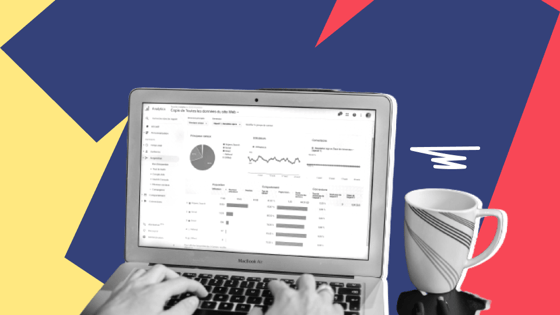-
10 Essential Sales Pipeline Metrics to Track
-
1. Pipeline Velocity
-
2. Qualified Leads per Week
-
3. Conversion Rates
-
4. Win Rate
-
5. Average Deal Size
-
6. Customer Lifetime Value
-
7. Number of Referrals
-
8. Customer Acquisition Cost
-
9. Deal Loss Reasons
-
10. LTV to CAC Ratio
-
How To Improve Your Sales Pipeline Metrics

The 10 Sales Pipeline Metrics that High-Growth Companies Track
“If you don’t know your numbers, you don’t know your business.” —Marcus Lemonis
The quote is a favorite of Lean Labs founder Kevin Barber. And it’s a good quote to live by if you want your business to succeed.
Numbers are vital in every area of business. If you don’t know your revenue and expenses, you won’t know if you’re profitable. If you don’t know your costs, you won’t know how to set your prices. And if you don’t know your sales pipeline metrics, you don’t know whether your marketing and sales efforts are succeeding or flopping.
Are you tracking the right sales pipeline metrics? Let’s find out. This post will cover ten vital metrics you’ll need to track to keep the finger on the pulse of your sales pipeline.
10 Essential Sales Pipeline Metrics to Track
1. Pipeline Velocity
- What is it?
Pipeline velocity is how quickly (or slowly) qualified leads move through your sales pipeline. This metric indicates your sales pipeline performance. A slower velocity indicates more friction points, whereas a higher velocity may indicate a smoother conversion process. - How can I measure it?
The formula for pipeline velocity is simple:
(Number of SQLs Average Deal Size Overall Win Rate) Length of Sales Cycle - How can I improve it?
You can improve pipeline velocity by clearly defining lead criteria, encouraging sales and marketing teams to collaborate closely, and creating sales enablement content to set up your sales reps to advance more deals.
2. Qualified Leads per Week
- What is it?
A qualified lead is a prospect who has been evaluated by your marketing (MQLs) or sales (SQLs) team and is determined to be a potential customer with real buying intent. Track the number of new qualified leads that come in every week for this metric.
Related Read: How to Choose a Lead Qualification Framework
- How can I measure it?
Your team will have its own criteria for what makes a lead “qualified” in either marketing or sales’s eyes. Once you have those parameters set, simply track the number of these who come in each week to calculate this metric. - How can I improve it?
The best way to improve qualified leads is to set clear criteria and communicate openly between sales and marketing regarding the quality of the leads being tagged. Use lead-scoring processes in your CRM tool, and take steps to ensure you’re creating lead magnets and website content designed to draw in the right kind of customer.
3. Conversion Rates
- What is it?
Your conversion rate is the percentage of people who take a desired action on a page or offering. You can measure the conversion rates for traffic to leads, leads to meetings booked, meetings to closed/won, and more. - How can I measure it?
Conversion rates are simple to calculate! For example, use the below formula to calculate the conversion rate for traffic to leads:
(Total number of new leads)(Total number of site visitors in that time frame) x 100 - How can I improve it?
Efforts you take to improve your conversion rates fall under Conversion Rate Optimization, or CRO. These efforts may include A/B testing of different iterations of offers, website copy, forms, or visual assets to find the best-performing version for your business.
CRO is a high-leverage activitiy: small improvements in conversion rates can result in significant long-term gains in revenue.
4. Win Rate
- What is it?
Your sales team’s win rate is a metric that helps gauge the success of their efforts over a given period. The “sweet spot” for a win rate for most B2B businesses is around twenty percent. - How can I measure it?
Win rate is calculated by taking comparing the number of won deals to the number of closed opportunities. This figure is your win rate for that period, expressed as a percentage. - How can I improve it?
You can improve your win rate by adjusting your selling language and assets. Additionally, you can examine your current opportunities and ensure you have the right criteria and processes in place to advance only opportunities who may genuinely be interested in becoming customers.
5. Average Deal Size
- What is it?
Average deal size refers to the average revenue brought in per sale. If your organization offers multiple packages or offerings, each customer may spend a different exact dollar amount, but the average of these figures is your average deal size.
Related Read: Our 6 Best B2B Growth Marketing Strategies You Can Steal.
- How can I measure it?
You can calculate the average deal size using the below formula:
(Total revenue for the period) (Number of customers over that period)
- How can I improve it?
Cross-selling and upselling efforts are excellent tactics for increasing average deal size. You should also evaluate your pricing model at least yearly to determine if you should adjust prices to account for inflation and market changes.
6. Customer Lifetime Value
- What is it?
Customer lifetime value (CLV) is the average amount of revenue a single customer produces for your organization not just through their initial deal, but throughout their entire relationship with your brand. - How can I measure it?
Measure your CLV using this equation:
(Avg purchase value per customer)(Avg purchase frequency)(Avg customer lifespan) - How can I improve it?
Increasing customer retention is the name of the game for improving CLV. You may want to explore starting a customer loyalty program, sending helpful emails filled with valuable advice on how to get the most out of your products, or improving customer support efforts to ensure your existing customers are delighted.
You should also consider ways to cross-sell and upsell your customers to provide (and receive) more value.
Related Read: 5 Customer Retention Tactics Marketers Don't Want to Share With You
7. Number of Referrals
- What is it?
This metric revolves around the number of customers who were so happy with your business that they took the time to give a testimonial or refer another potential customer. - How can I measure it?
This is less of a calculation and more of a simple tally. Tag the referrals you receive in your CMS to ensure you can report on them or segment them for communication if needed. Have your sales team ask every lead “so, how did you hear about us?”. This is also an excellent field to add to all your forms to collect self-reported attribution data. - How can I improve it?
One way to improve referrals is to keep your existing customers engaged and happy with your services. Additionally, you can offer a referral bonus or discount to your customers to encourage them to mention you to a friend. And don’t be afraid to simply ask your best customers “do you have any friends or colleagues who might benefit from our solution?”
8. Customer Acquisition Cost
- What is it?
Customer acquisition cost (CAC) is the dollar amount it costs your organization to acquire a new customer. This figure includes marketing and sales costs, as well as any other funds spent acquiring new business. - How can I measure it?
Measure CAC using this equation:
($ spent on customer acquisition in a period)(Number of new customers acquired)
- How can I improve it?
You can take a few different approaches to lower your customer acquisition cost. For example, you can prioritize your audiences to target strong-fit customers rather than poor-fit leads. You can also work to improve customer retention, or retarget previous customers who have fallen off rather than targeting entirely new leads.
If you spend a lot on paid advertising, you may consider leveraging more scaleable customer acquistion channels like organic lead generation.
9. Deal Loss Reasons
- What is it?
You’re not going to win over every opportunity. It’s important to track the reason why certain deals fall through before the finish line. You can use this data to close gaps in your process or adjust your messaging where appropriate. - How can I measure it?
This data is more qualitative than it is quantitative. Make sure that every sales person indicates the reason each deal was lost in your CRM to track this data. - How can I improve it?
As this isn’t a figure, it’s difficult to define “improvement” for this metric. However, you can improve your sales funnel by examining the deal loss reasons regularly and improving your processes as needed.
10. LTV to CAC Ratio
- What is it?
We’ve already discussed lifetime customer value and acquisition cost: This metric puts those two ideas together. How does the lifetime value of a customer compare with the cost of acquiring that customer to begin with? - How can I measure it?
Measure this figure by taking your average lifetime customer value and dividing it by your customer acquisition cost. Generally, you’ll want your LTV to be around four to five times larger than your CAC to scale your business. For more on this and to see real-life examples, check out the Growth Playbook. - How can I improve it?
Improve either lifetime customer value or customer acquisition cost to improve this metric. It’s as simple (and challenging) as that.
How To Improve Your Sales Pipeline Metrics
Tracking these ten metrics is an excellent way to get started on your journey to massive growth shifts in your business. However, tracking metrics isn’t the whole picture. To truly start crushing your targets and growing your business, you need to know how to identify challenges and opportunities in your pipeline.
In other words: You need to know how to locate points of friction in your buyers’ journey.
Unsure of where to start? Don’t worry—we’ve got you covered. Use our free Growth Grader tool to quickly identify which of your efforts are working and what challenges are causing friction in your sales pipeline. You can then use the tool to systematically track your progress, ensuring that your team stays on track.
Download the free Growth Grader and start improving your sales pipeline metrics today!





